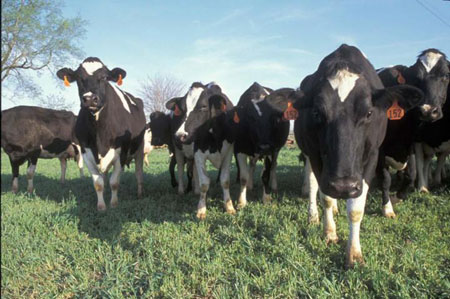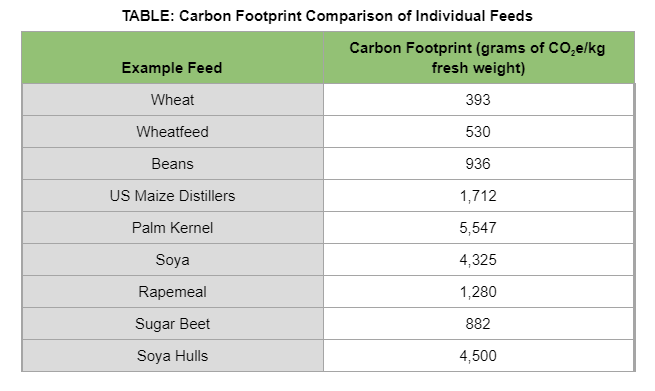



How to understand the carbon footprint of rations
Mole Valley Farmers is helping producers to reduce the environmental impact of their rations by calculating the carbon footprint of every feed ingredient delivered to their mills.Every feed handled by the British farmer owned cooperative now has a “Product Environment Footprint” up to its arrival at the feed mill. They are also on track to provide carbon footprint information for every blend, compound and straight delivered to the farm gate. This data will then be inputted into the business’ Precision Nutrition Rationing Programme so farmers can understand the carbon footprint of their whole diet, including homegrown forages.
Mole Valley Feed Solutions’ Nutritionist, Dr Matt Witt says it’s about helping farmers get on the front foot when it comes to environmental sustainability and biodiversity. This is vital considering they will be rewarded for environmental improvements as part of the Government’s phasing out of direct payments.

Matt says: “Farmers will need to show they are taking steps to reduce their carbon footprint as part of the new Sustainable Farming Incentive. With feed responsible for 46 percent of greenhouse gas emissions from dairy farming, it’s one area where farmers can make a big difference.
“As a business, we’ve always been conscious of the need for environmentally sustainable products. That’s why we developed our no soya and no palm products a number of years ago and recently introduced our Great British Feeds range. The need to understand the environmental impact of feed ingredients is quite rightly getting stronger and is a growing requirement from farmers and processors.”
With that in mind, Mole Valley Farmers has invested in the latest information from the GFLI (Global Feed LCA Institute) database and worked closely with The University of Nottingham.
Mole Valley Farmers’ Feed Formulator, Hannah Banfield has been collating the numbers. She says: “This data has been used to produce a carbon footprint figure in grams of carbon dioxide equivalent per kilo gram (grams of CO2e/kg) for every feed material delivered to our four mills.”
The aim is to work out the carbon footprint of all compounds and blends delivered to an individual farm from a specific mill. In the meantime, Matt says the individual carbon footprint data for each feed gives a useful indication of where environmentally friendly changes might be made.
For example, soya has a carbon footprint of 4,325 grams of CO2e/kg . However, this could be swapped for other protein sources including rapemeal - which has a carbon footprint of 1,280 grams of CO2e/kg - and maize distillers at 1,547 grams of CO2e/kg . However, differences in nutritional value mean that formulations and rations will need to be adjusted carefully looking at nutrition, cost and carbon footprint.
Matt stresses that the work is in its early stages, but will offer workable and accurate solutions for farmers. “We’re determined and believe it is our responsibility to help reduce the carbon footprint of rations. By getting a better understanding of what the current carbon footprint of feeds look like we can start to put in place steps to help farmers lower the environmental impact of their businesses.”
This feed carbon foot printing works sits alongside existing measures taken by Mole Valley Farmers to help producers lower their environmental impact. This includes understanding the nitrogen and methane impact of different diets using Mole Valley Farmers’ Precision Nutrition rationing programme. Mole Valley Farmers is also working to lower the carbon footprint of their mills, including producing energy from an anaerobic digester at their Dorchester facility. Addressing the environmental impact of fertilisers is also on the agenda.



